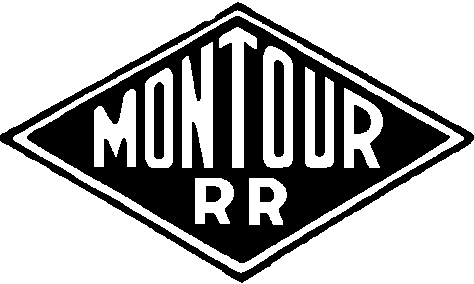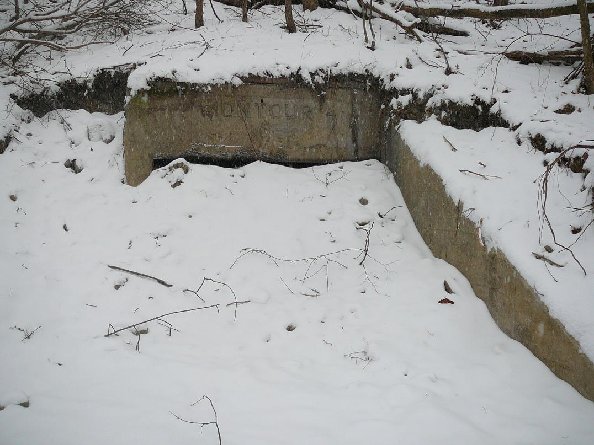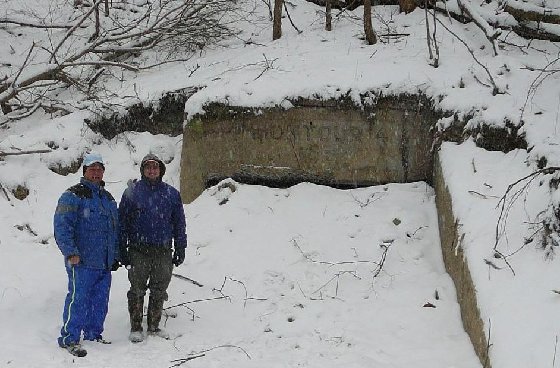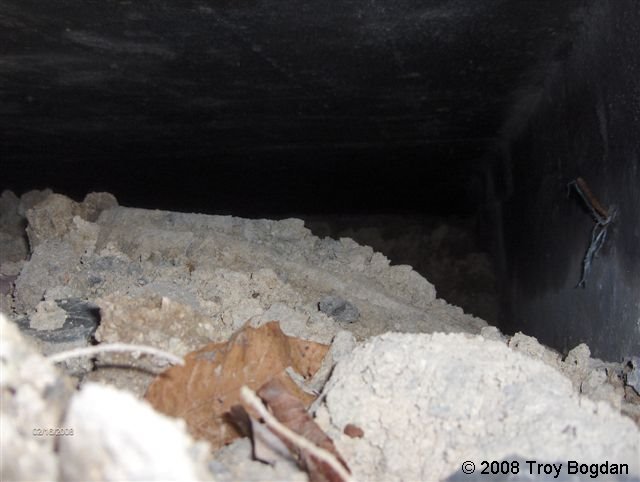 Montour Railroad
Montour Railroad 
|
|
Montour # 4 Read Bob Ciminels' report on Montour #4. The Montour No. 4 mine sat on the McMurry Syncline, where the coal seam was at 700' to 740' MSL, dipping upward to the northeast. The original mine was located along the creek below Lawrence and was about 100' deep. The Hills shaft accessed the coal down dip toward the southwest and was about 140' deep. The aerial photo shows the Hills Shaft before they began hauling waste out of it. It was just a load out for the Montour, as there were no facilities for the miners there. Montour #2 was opened around 1914 according to the 1913 Penna Bureau of Mines Annual Report. The report states 'Montour 1, 2 and 4, new shafts open just down to the coal. Click on the
images to get a high resolution view.
Montour #4 Train Orders - Gene P. Schaeffer When empty's were delivered - since most came from west of #4 - Champion - McDonald - even Hills Transfer - would that mean that train orders would state "run by back in" ? Yes,
most train orders stated, Run By and Back In. Which depending on the
size of the train You could go 25 car lengths by or 125 car lengths
with Run By and Back In. Train
Order #22.
To: C&E Engine 83 at Library Junction... Engine 83 Run Extra, Library Junction to West End Champion...Run By and Back In. Extra 77...77 East Run By and Back In and meet Extra 83 ...83 West at East End... #4...(Four) Mine Hills... Extra 83...83 West...Do Not Pass Gilmore Junction. Not Protecting East of Thompsonville. signed F.C.R. A FRA Inspector I knew well from all of his visits to the property, scolded me in the use of Run By and Back In. I told him this wasn't my doing, but the doings of Company as this is how I was taught. He informed me using run by and back train orders was a "no-no" and you could easily put yourself into a cornfield meet situationas your overlapping train orders. Train Orders to the end of the main line at Salida could not contain Run By and Back In as the property ended at Salida. So train orders were issued Run Extra Champion to East End Salida. Would a train of empty's be doubled to shove back into the yard or shove the whole string? Most
often empties were shoved into the yard in one bunch unless a single
unit crew was pulling in Boyce and the typical 100 car orders that a
single SW-9 would have trouble pulling. This may of been different
prior to 1970 when VHF radios were in use on the Montour RR. Did #4 receive many cars from
east - Salida or Snowden? When the Mifflin
Extension was constructed, the Bessemer Agreement was
created allowing empty hoppers coming from Mifflin, mostly B&LE
cars in later years, a trip under the tipple at Montour 4 as well as
down the Library Branch to #10 so stop off coal could be returned to
Champion, unloaded then the B&LE cars reloaded East. If
the empty yard was full of empty's - were extras stored at
Thompsonville? Or was the amount of cars monitored closely so
this did not happen?? When
#4's empty yard was filled, extras were left on Hills Transfer.
Thompsonville was used for crews coming out of Mifflin with empty's.
Thompsonville was also used when problems occurred out on the main and
#4 loaded yard need relieved, so loads from #4 were shoved up to
Thompsonville until crews were available to move coal to Champion. You
only had to be careful when sending empties to Westland or Montour #10
as there was no place to leave them if you sent too many. Following
Extra's, Wait at Grers Tunnel Until...
2:40 AM Extra
83...83 West...Protect against the Rear of
Extra 80...80 West between Pennsylvania Company... Transfer Hills...and West End #4....(Four)...Mine Hills.... signed F.C.R... This is a 1939 aerial view showing the relationship between Montour No. 4 and Thompsonville Siding. The Montour main track curves off to the left in the upper part of the photo and the Hills Interchange with the PRR's Chartiers Branch goes off to the right. At this time, the Lawrence shaft and production facilities for No. 4 mine were still active and the center of activity. Flooding eventually terminated operations at No. 4 mine, the McMurray borehole is used to monitor the water level in the No. 10 workings, and is approximately at the point where mine No. 4 abuts No. 10. By monitoring at McMurray, CONSOL can determine if they need to increase pumping at the Hahn AMD plant on Hahn Road to prevent overflow into Chartiers Creek. The Hahn AMD (Acid Mine Drainage) plant draws water from the lowest point in No. 4 mine. The lowest point in No. 10 mine was at the Murdock borehole, which I have not been able to locate. - Bob Ciminel
#4 Mine Portal Found Here is a scene that
hasn't seen the light of day for almost 20 years.
I believe the ghosts of the Montour are looking over us. And, ironically, if it wasn't for the Trail - and the weather - which caused the postponement of the bridge beams being placed - I probably would not have even seen the portal to #4. I would have walked on by - and spent my time watching the activity at the bridge. I went to #4 to
check out the new bridge, but there was nobody there and no work being
done. When I called Troy & he said he would still come over and
we could check out a few things - I decided to kill some time by
walking up the hillside to where the mine
entrance was - and lo and behold, the concrete portal was what
greeted me. When Carter, RJ & I were there in December, it was
nowhere to be seen. Nothing but a shallow depression in the dirt
hillside. From the stories about it being bulldozed and buried - I
never expected anything like this would still be there. I figured the
portal was in a land fill or dumped down the shaft when it was sealed.
Yes - what a find!! If the Trail work would have been in action, I may
not have bothered to climb up to see the portal site. It is
not visible from the road or the main line/trail. It was only
when I got up onto the hill that I could see it.
This black and white picture at the top of the page
is dated 1956. You can see the pipes/conduits above the
conveyor on the left. If you look closely at the left side, the pipes
curve down at an angle - starting to match the angle of the shaft
entrance. The cement support under the conveyor just at the left end of
the metal roofing is still in place on the hillside. The main tipple
structure is where TAR's new brick building sits. The brick building on
the right of the picture is the old power house and is still in place
along the edge of Brush Run. This view is looking east - the loaded
yard is to the left - the empty yard is on the far side of the tipple -
and the Montour main line runs on the raised bank going under
the conveyor. Brush Run and Valleybrook Road are to
the right, out of frame.
Oh my - do we need that "Way-Back Machine" now........
Christmas may have come and gone - but the ghosts of
the Montour whisper on the hillside.
 This is the portal
for Montour #4 - dated 1953 - on the hillside behind the TAR
Storage building where the #4 tipple previously stood. This is where
the conveyor went into the hillside and down to the mine level where
the rotary dumper was located. Tim has told a couple of stories about
going down the conveyor portal when #4 was shut down.
Tom Robinson - the
owner of TAR Storage - told Carter he was considering installing a wine
cellar in the hillside. When Carter told him that
the portal & tunnel was there, he seemed interested about that.
It looks like he was interested enough to do some digging and this is
what was uncovered. We did not talk to Tom - so will try to get more
info from him down the road.
 Even a tunnel rat
cannot get into the portal - but we don't know if TAR will clear out
any more of it. The fill has settled about 6-8 inches, so there is a
little space at the top - enough to see that the ceiling starts to
slope down just a few feet into the portal.
The
emergence of the portal opening is nothing short of a sign of better
things to come for Montour followers. Looks like a great
start for this new year. Thanks
gentlemen for your Tuesday adventure in the snow & ice to bring
us all in on the find. Wonderful...
After
seeing the first pictures a few days ago, I started to dig through my
mis-filed system of photos, searching for that certain view
captured prior to the power being turned off at #4 Mine in 1980. Lo
and behold I found it relatively quick, hope you enjoy this
companion image, 28 years younger. Now I need to
locate the picture of the cement truck pumping cement down the shaft
during the sealing process.
Description:
The
corrugated metal in the lower right was located above the
walkway. The five power cables are directly above
the conveyor belt. You can see the peak of the
metal roof that housed the walkway and belt over the MRR main.
Tim Sposato
 Looking down inside the portal
Step
back to 12-19-80.
I
was scheduled to work 2pm, 2nd trick YM at Champion. Woke
up around 6am, well knowing what this day meant for
the railroad and myself. 6:30am found me
driving towards Champion, sipping on a cup of hot joe. Conductor G.
Biearman was called for 6am on Extra 73 east. Out of MRR Jct
at 6:30am, light for a turn at Brookside.
After arriving Champion at 7:45am, Ex.73 picked up 2 coal loads of commercial coal for delivery to CR at McDonald. Departure from Champion was at 8:10am. At McDonald, Ex.73 delivered the coal and picked up several loads of lumber for Brookside. Next stop was Southview for another load to Brookside and a boxcar to Muse. After departing Muse Jct, the train climbed toward National Tunnel, I drove on ahead to #4. Arriving at Hills I watched the activities of the cement and pumper trucks sealing the portal. The long pumper extension crossing over the track as it poured the cement through the piping. The pipe laid on the ground supported by brackets as it climbed the embankment and disappeared into the portal shaft. After a brief chit chat with the foreman about the location of Ex.73, they emptied the truck, disconnected the pipe and raised the pumpers extension arm to await the trains arrival. It was late morning, the heavy overcast with drizzle was melting the thin layer of snow from previous days, I needed to watch the time to insure not being late reporting to Champion. Faintly the muffled sound of the #73 whistling for Greers Crossing echoed down the Chartiers Valley. Engine 73 slowly passed by the once busy tipple, under the out stretched arm of the pumper, tooting a little on the tooter as crewmen and workers waved greetings. Looking at my watch there was plenty of time to pace the last eastbound loads for Brookside Lumber, knowing all to well never being able to see this again. I continued driving along Valleybrook Rd, following the eastbound and just taking it all in. Timing was good, I could see them switch B-side and still be at Champion by 2pm........until just west of MP34. The last boxcar and Caboose 36 dropped between the rails as they encountered wide gauge. Minor derailment.. As I sat in the creaking wooden chair gazing out the YO window at the Prep plant, listening to the train orders and instructions given over the airwaves, the vision of #73 shoving caboose first back to Library Jct to get around it. I followed the move from memory, Brookside to Southview, sorry to have missed it, yet mentally was still a part of it. I vowed to ride the last run to Brookside one week later, one last train ride over those rails that had become so endeared to me. That final run for the mtys was made, no issues, no troubles, just a quiet event for the few of us that were there.- Tim Sposato FIRE
Around
11:30 a.m. on
Friday, June 10, 1960, a fire of unknown origin started near an
automatic car spotter at the discharge end of a conveyor
belt.
The area was a neutral air zone, equipped with an airlock that allowed
only enough air flow to prevent methane accumulation.
Consequently, there was insufficient air movement to remove the smoke
from the fire, which prevented fire fighters from reaching the blaze. |
|||
| Sad Tale about Montour 4 from Long Ago By Kevin Arceneaux Choo choo - the only motorman
to get lost in the mine. He was not the sharpest tool in the
shed, and everyone road him. One time a choo choo was going on
shift anther guy said he was goong to Chooc's house to visit his wife,
chooc went home and sat outside waiting for him to show up.
Mearl was the midnight shift boss, a really great guy. I was on steady midnight's and he was great to work for. I was with him in his jeep one night and he looked at me and asked how old I was. I told him 18 and he asked wtf was I doing working in a mine. After I told him it was for college, he took care of me. He paired me up with a motorman, cannot remember his name, and would give a list of things he wanted done that night. If we finished out list early we would go hide somewhere ( a lot of places for that) until the end of shift, we just had to listen to the radio in case he needed us for something. Lee - he was a miner operator. He brought so much food that he had to use bungee cords to keep his lunch pail closed. I forget which section, but on Fridays they would all bring a dish and had a good lunch. That was a great crew, everyone worked together and we mined coal. We would get on a run and the section boss would ask if we would eat lunch on the fly and get an extra half hour. The biggest problem was getting empties to load. There also was a crew of elderly black track workers. I got to work with them a couple of times and it was a good time. We were eating lunch and they started talking about baseball and they were remember the old teams from the 30's and 40's. They started talking about a guy from Library who could pitch real good, how he had played some games against the Homestead Greys and would give then hell. I asked who and the said a guy they called strings. I started laughing and they looked at me like I was an idiot. I told them that Strings real name was Frank Strimlan and he was my Grandfather. I was in like flint after that with them. Most of them had come from the Westland Mine. They had started back in the 40's during the war and it was my Grandfather, who was the Super, that fought to get them hired, he needed workers. When he did , the union started to push back, so he called John L., he knew him, and got that straightened out. One of the guys said he had got hurt and had to go to the hospital and still remembered that my Grandfather was the only boss that came to see him. I couldn't wait to get home and go see my Grandfather to tell him. He was impressed that they remembered him. |